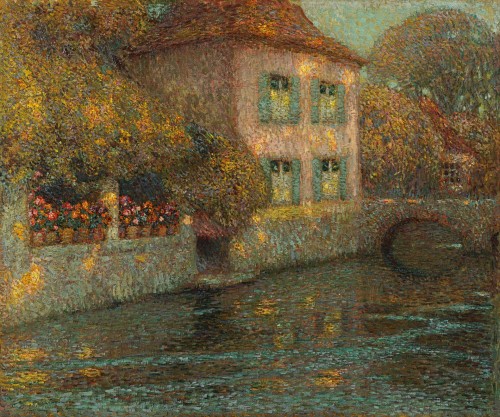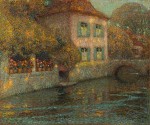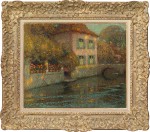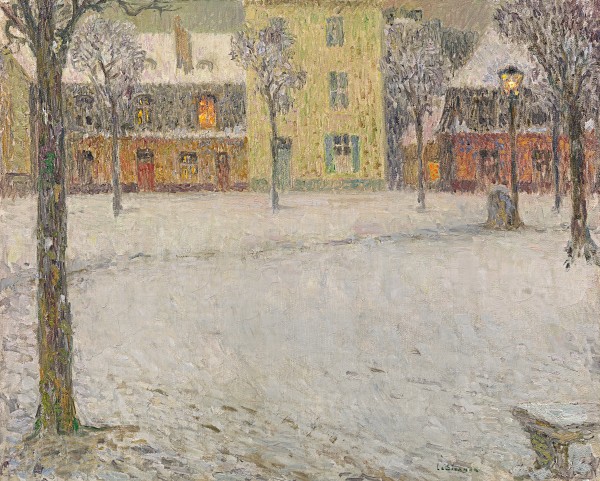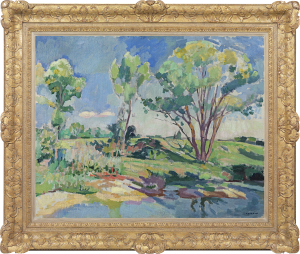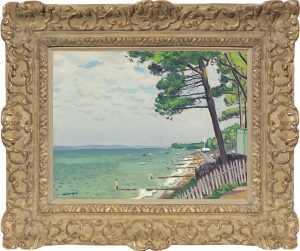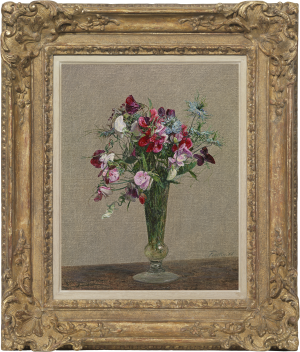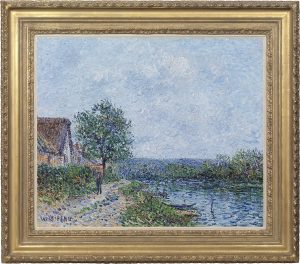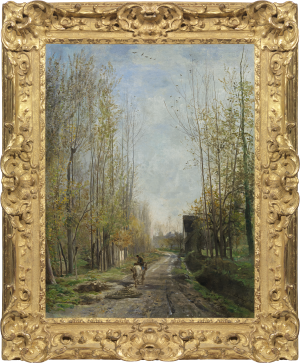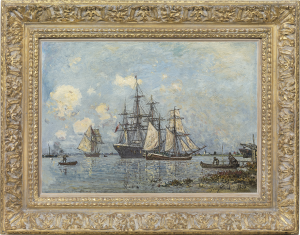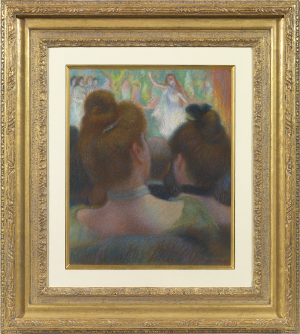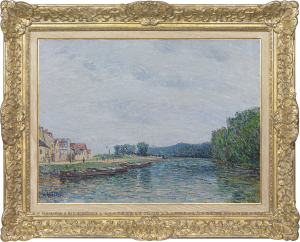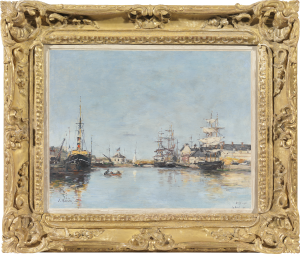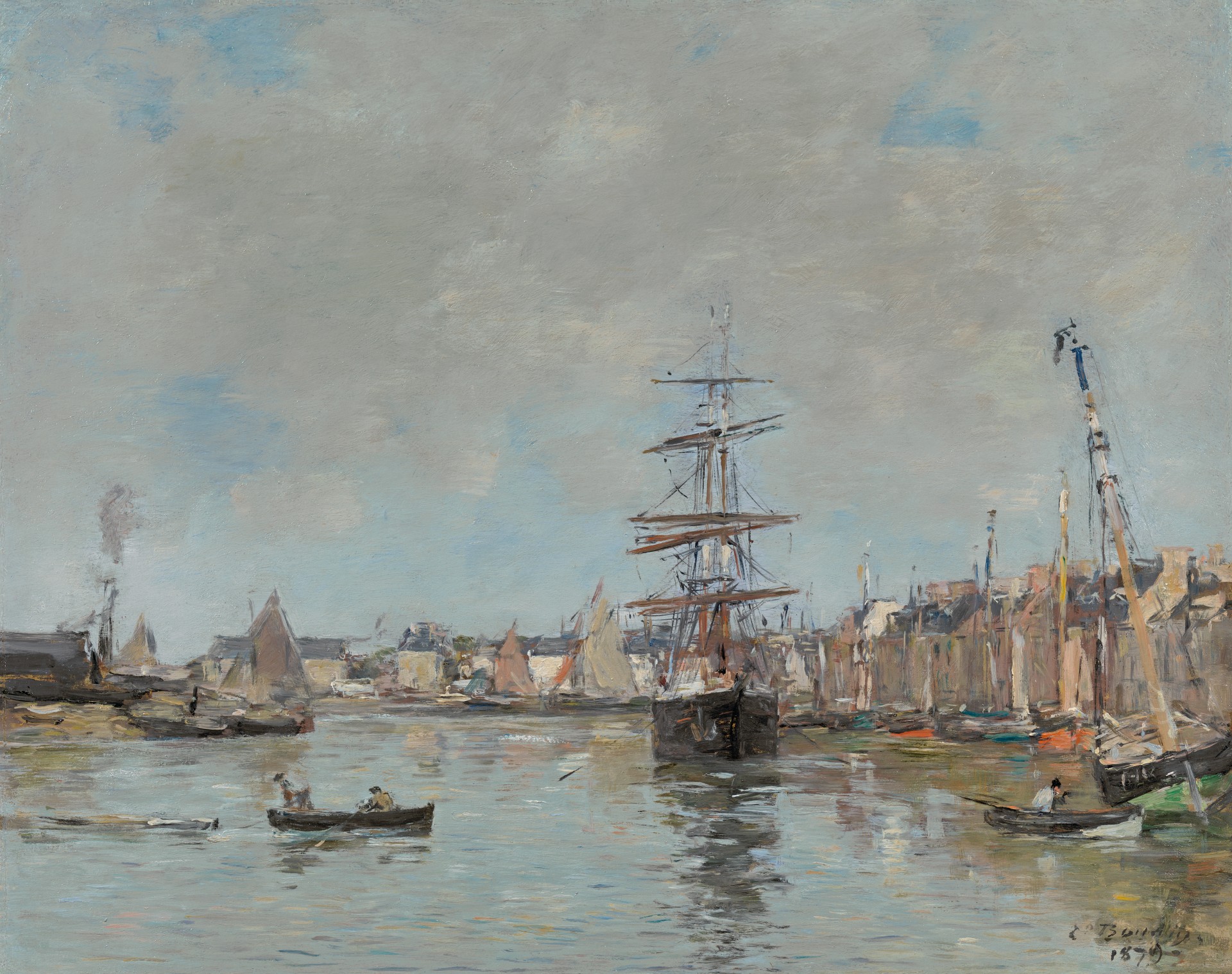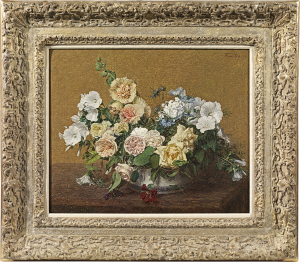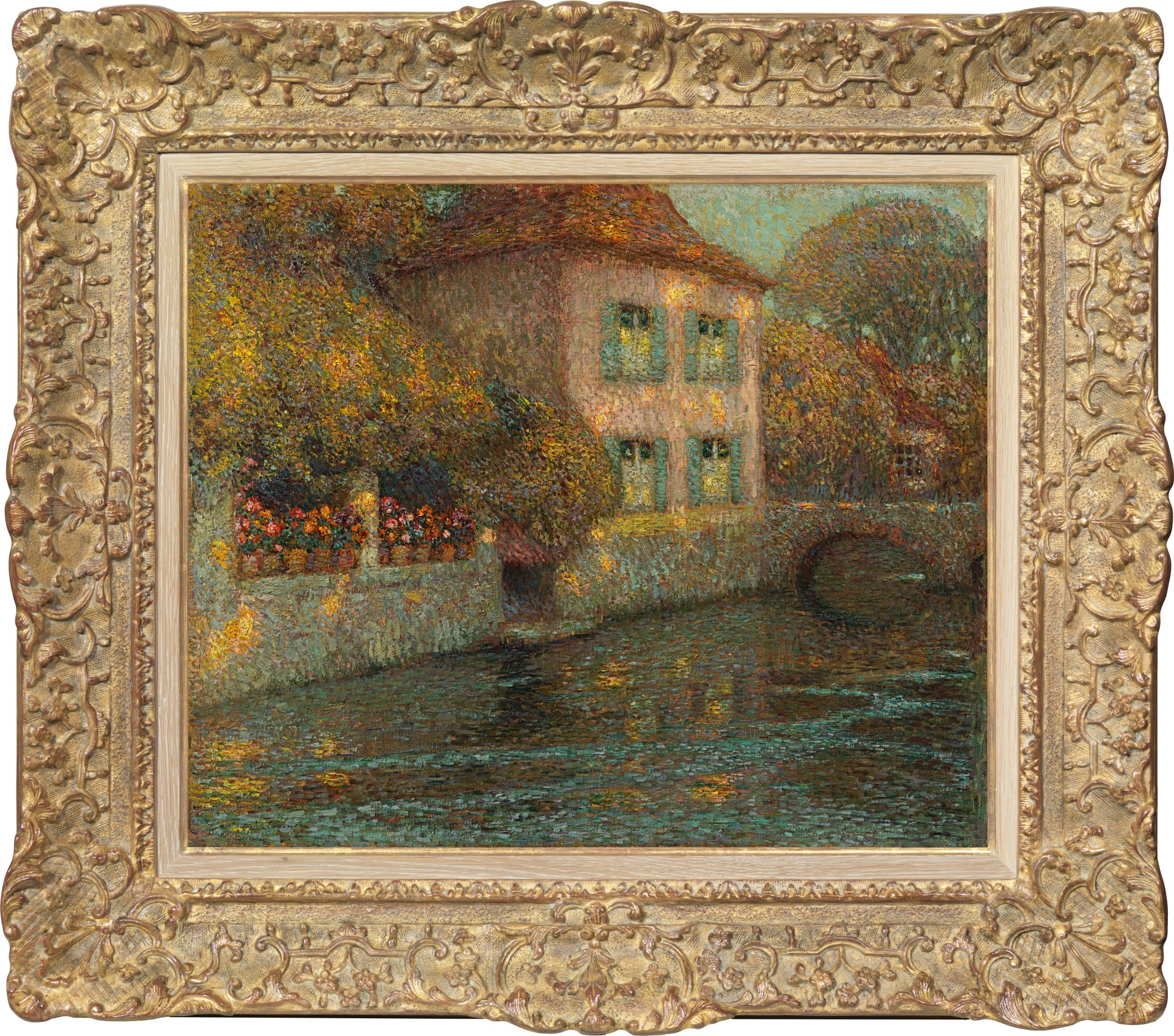Henri Le Sidaner
Maison ensoleillée
Oil on canvas: 21.6 x 25.7 (in) / 54.9 x 65.4 (cm)
Signed lower left: Le Sidaner
This artwork is for sale.
Please contact us on: +44 (0)20 7493 3939.
Email us
HENRI LE SIDANER
Port-Louis 1862 - 1939 Versailles
Ref: CB 159
Maison ensoleillée
Signed lower left: Le Sidaner
Oil on canvas: 21 5/8 x 25 ¾ in / 54.9 x 65.4 cm
Frame size: 31 ½ x 36 ½ in / 80 x 92.7 cm
Painted in Nemours in 1913
Provenance:
Galerie Georges Petit, Paris, no.2175 and 9268
Sale, Galerie Giroux, Brussels, 21st February 1951
Private collection, Europe, acquired in June 1974
Literature:
Yann Farinaux-Le Sidaner, Le Sidaner, l’Oeuvre Peint et Gravé, Milan 1989, p.133, no.302, illus.
Henri le Sidaner was fascinated by oblique lighting and transitional times of day: the pulsating glow of white flowers in his garden in Gerberoy; l’heure bleue on the Côte d’Azur. He also liked nothing better than depicting waterways fringed by the austere beauty of the seventeenth and eighteenth century vernacular architecture that is a feature of many old French towns. Nemours, situated on the river Loing in the Ile-de-France, is one such.
This painting shows a quiet corner of the small canal encircling the ancient centre of Nemours, which had grown up around the medieval castle on the Loing. France’s great rivers were enhanced by canals developed in major engineering projects from the seventeenth century, allowing goods to be transported more easily (and safely) than by rutted, bandit-infested roads. The main Canal du Loing which arcs around Nemours was completed in 1723 as part of the Bourbonnais route from Lyon to Paris, bringing sugar and other agricultural produce to the capital.
Le Sidaner evokes the warmth of a late summer afternoon infused with golden light. The rays of a low sun play on the windows of an old house of perfect, cubic proportions, adding to the serenity with which Le Sidaner always imbues his pictures. Gentle ripples from the canal create dancing points of light across the house’s façade, the trees and the embankment. Le Sidaner is a masterly colourist, mellow even when using contrasts: tones of gold, yellow and orange infuse the canvas, offset by gentle turquoise in the shutters of the house and the striations of shadow on the canal. He juxtaposes touches of contrasting colour in a pointillist manner that gives vibrancy to the picture surface. A characteristic element is the pots of red geraniums that line the wall, bringing another orderly burst of colour to the composition. Le Sidaner’s world is full of beauty, classically balanced. He rarely includes figures in his paintings, instead celebrating centuries of human habitation and community through an intimate picture of architecture, nature and light.
Le Sidaner explored the theme of canals and canalised rivers several times around 1912-13. They include Le canal au crépuscule, Gisors and Le canal au printemps, Gisors in 1912[1] and Le canal, Delft in 1913[2]. He depicted Canal sous la neige, Nemours in 1913 and undertook another painting campaign in Nemours in 1920[3].
HENRI LE SIDANER
Port-Louis 1862 - 1939 Versailles
Henri Le Sidaner was born in Port-Louis, Mauritius in 1862, the son of a shipbroker of Breton descent. At the age of ten his family moved to Dunkirk and in 1880, after the death of his father, to Paris. Le Sidaner entered the studio of Alexandre Cabanel at the Ecole des Beaux-Arts in 1884, but was more inspired by Manet than by his master’s dry academicism.
In 1889 he moved to Etaples, where he met the painters Eugène Chigot and Henri Duhem, who were to remain lifelong friends. Le Sidaner made plein-air paintings of Breton peasants and fishermen in a subdued palette.
In 1892 a grant allowed him to paint in Florence, Venice and Katwijk in Holland. In 1894 he settled in Paris, transferring his allegiance from the Salon to the more avant-garde Société Nationale des Beaux-Arts. In this period Le Sidaner produced paintings such as the 1896 Morning (Musée de Dunkerque) and Twilight (private collection), which combine elements of Impressionist technique with Symbolist themes. That year he signed a contract with the Mancini Gallery.
In 1898 Le Sidaner turned decisively towards the highly individual style, building on the innovations of Impressionism, that would characterise his work for the rest of his life. In 1898 he went to Bruges with his lover Camille; their son Louis was born in Paris in October, although the couple was based in Bruges for another year. In 1899 they returned to Paris and Le Sidaner became one of the group of artists represented by Galeries Georges Petit, which would give him financial stability and remain his dealer until 1930.
Le Sidaner, keen to buy a country house around which he could develop a garden, was advised by Rodin to visit the terrain near Beauvais. In 1901 he rented a cottage in the picturesque town of Gerberoy (Seine et Oise). He bought it in 1904 and in 1910 greatly enlarged the house, creating a paradisiacal garden which provided the inspiration for many of his later paintings. Le Sidaner developed a poetic style of Post-Impressionism which explores the qualities of light and objects through harmonies and counterpoint of subtle tones. After 1900 he rarely included figures in his paintings, implying human presence through his interest in depicting a community of ancient houses, or a table set for tea. Le Sidaner’s works, with their evocation of mood and emotional engagement with landscape, have affinities with the music of ‘Impressionist’ composers such as Claude Debussy.
Le Sidaner travelled in search of new motifs, wintering in Venice or London to escape the freezing cold of Gerberoy. From 1914 his family was based at a comfortable house in Versailles and summered in Gerberoy. From around 1920 his paintings employ a lighter palette and sparer, more dreamlike compositions. He was awarded the Légion d’Honneur in 1913 and the First Prize at the 1925 Pittsburgh International. Henri Le Sidaner died in Paris in 1939.
[1] Farinaux, op. cit., p.132, no.300 and 301.
[2] Ibid., p.133, no.304.
[3] Ibid., p.173, no.433, 434 and 436.

